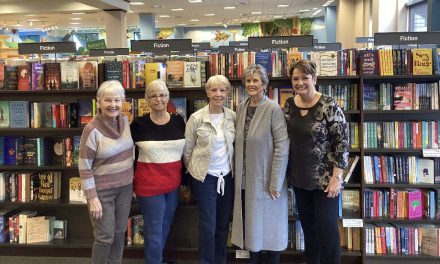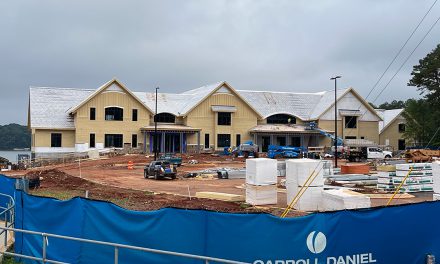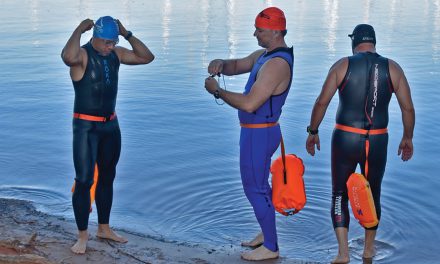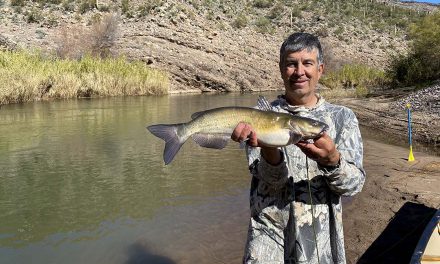Last fall when Covid variants continued to threaten, my wanderlust took me to Europe twice within five weeks. My September jaunt to Paris and a 13-day small-boat cruise down the Rhone River through Provence quickly gave way to an October 18-day sea voyage on a ship along the Iberian Peninsula around Gibraltar with a stop in northern Africa capped off my 2-year hiatus of international travel.
Home only about five weeks it was soon time to repack my bags and head to Portugal and Spain. This time, I’d be spending the bulk of the trip on my favorite Grand Circle Travel/Overseas Adventure Travel ship, the 90-passenger ocean-worthy Clio. She’s the same vessel that took Rick and me into the Mediterranean from the port of Haifa, Israel, south through the Suez Canal and on to Egypt late in 2019, about eight weeks before the pandemic began in 2020.
The journey began with three days in the seaside city of Lisbon, Portugal. Immediately we were immersed in the country’s culture and proud history of fathering explorers like Vasco da Gama, Ferdinand Magellan and Bartolomeu Dias.
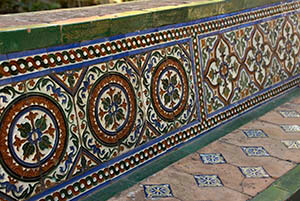
Colorful handpainted tiles adorn area architecture in Portugal.
Portugal, in addition to its famous explorers, is known for its port wine and its colorful hand-painted tiles that adorn public buildings, private homes and appear just about everywhere you look. A visit to a tile studio gave us a close-up look at the mastery and skill involved.
The star of the Portuguese cuisine, Bacalhau, is codfish that since the 15th century has been wild caught in the North Sea, dried and salted to preserve it, then exported to Portugal. It fed the Portuguese for centuries when fishing resources for the country waned. The highly preserved fish provided an excellent source of protein for explorers’ lengthy sea voyages.
We took a motorcoach to Portimao south of Lisbon to board the Clio, for our trip around the Iberian Peninsula, through the Straits of Gibraltar and up the coast to Barcelona. It felt to me like a homecoming, not only because of being on the Clio again, but because, after nearly three years, several of the crew remembered me – and I them – from my Suez cruise, including the hotel manager, the restaurant manager and the captain.
Cruising overnight our first stop was Seville, where we stayed for three nights. When traveling by ship it’s not uncommon to spend several nights in one port, particularly when there are multiple points of interest within an hour or two drive. For instance, from Seville, we took a 90-minute drive to experience a day in the life of a bull farm.
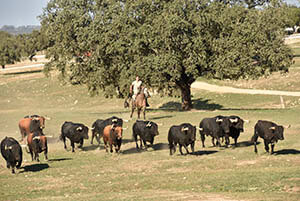
A bull ranch in Spain where the bulls are king.
Yes, another bull farm – remember the one in France? – but these bulls are raised on a ranch that formerly supplied the most famous rings in Spain and Malaga. This farm, owned and run by women, is home to 750 cattle, plus black pigs and herds of Andalusian horses. We rode on a trailer pulled by a truck to see the livestock that are raised free-range on the 800-acre farm.
The next day, we toured Seville, where Christopher Columbus is buried. While there’s great debate about his true nationality, the Spanish have lavishly built a tomb to house his remains. We visited the elegant Alhambra Palace and Fortress, home of the Moorish monarchs, in nearby Granada.
The next day: Cordoba, with a tour of La Mezquita Cathedral, a 13th century-Catholic church built around a former mosque, constructed in 784. Rows and rows of sienna and white Romanesque arches created a labyrinth of columns that seem to go on for miles. It’s an example of one culture being willing to preserve another to the benefit of future generations.
The itinerary called for a brief visit to Tangier, Morocco, but pandemic precautions forced a change to Ceuta, a Spanish province adjacent to Morocco. What a surprise: Ceuta is a charming town that includes a real-life giant Hercules-like statue that gazes across the Strait of Gibraltar as if holding it back from colliding with North Africa.
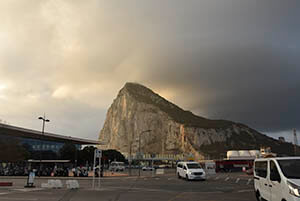
The Rock of Gibraltar cuts an impressive presence in the morning as the fog and clouds clear.
We’ve all seen the emblem of The Prudential Insurance Company in advertisements but seeing the Rock of Gibraltar in person is breathtaking. As we approached this English territory we didn’t have any idea of what was in store. Perhaps the most surprising: The extensive tunnels inside the big rock used in World War II were one of the most secret places of the war, where soldiers lived inside to protect the rock if it fell under German control.
Next we sailed on to Malaga, the childhood home of Pablo Picasso and one of the sites of bullfighting. During our next stop in the port of Cartagena, we visited a recently restored Roman amphitheater that looks like it popped right out of the earth, nearly intact in the midst of more recently built homes.
On around the coast to Valencia, we were greeted with the first rain showers of the trip. We took a visit to an incredible structure – The City of Arts and Sciences – a complex of ultra-modern buildings, one that looks like a football lying on its side in a reflecting pool, another that resembles a space ship shaped like an elongated helmet, and a third with a contemporary interpretation of flying buttresses. They’re all perched in a series of reflecting pools. You have to see it to believe it; and it’s too large to take a photograph to do it justice.
Our final port, Barcelona, is an anomaly of architecture and design. From the Gothic Quarter that showcases Medieval and Roman buildings to the incredible Sagrada Familia church designed by the artist Gaudi who took over the design of the building in 1883 when the original architect resigned. Gaudi combined Gothic and art nouveau styles and personally oversaw construction until his death in 1926.
The original design included 18 spires – only nine have been completed so far – and elaborate facades showcasing figures to highlight the Nativity, the Passion and the Glory. The incredibly detailed walls range from highly decorative and complex to simple and austere.
Touring this architectural masterpiece provided a high note to end my journey. It also whet my appetite to visit Spain and Portugal again. Coincidentally, I did just that this past April.
My love of travel continues to grow, in part because I love learning about new cultures, new people and history that I refused to absorb when I was a student. My travels allow me to further explore as I take thousands of photos on each journey; most never see the light of day past the inside of my office. However, it’s the hunt for those perfect images that say more than words ever could that makes me want to expand my experiences and just keep going. See video for more of Pam’s European trip photos.
Photos: by Pamela A. Keene

